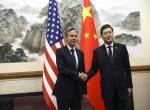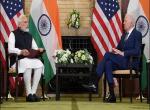Book Review - That Used To Be US by Tom Friedman and Michael Mandelbaum. The book spells out succintly where the US is slipping up, says Kanwal Sibal
As the title suggests, this book deals with the reality of the United States’ slow decline, the reasons for it, and how the country can recover its global pre-eminence.
According to the authors the post Cold War era has presented four major challenges for America: how to adapt to globalization, how to adjust to the information technology, or IT, revolution, how to cope with the soaring deficits stemming from the growing demands on government and how to manage a world of both rising energy consumption and rising climate threat.
Unfortunately, the authors note, US public policy has lost focus after the Cold War ended. In the last twenty years America’s biggest problems relating to education, deficits and debt, and energy and climate change, have been neglected to the point that they cannot now be addressed without collective action and collective sacrifice.
The US has stopped investing in the country’s traditional formula for greatness- immigration, education and sensible regulation. To make matters worse, the political system has become paralysed and values have got corroded. For the authors, if America is to remain a great country, it must, while reducing deficits, invest in education, infrastructure, research and development as well as open up US society widely to talented immigration, and fix the regulations that govern the economy.
Globalization and the IT revolution have virtually put every American job under pressure as almost all work has become more complex and more demanding of critical-thinking skills, requiring every American to be better educated to secure a well-paying job. The challenge to America is now from low-wage, high skilled workers from across the globe. Education levels in America in maths and sciences have fallen badly, which has led President Obama to declare that “the country that out-educates us today will out-compete us tomorrow”.
The world is now even flatter than in 2005 (when Friedman’s book The World is Flat was published) with Facebook, twitter, cloud, 3G and Skype. In the past only governments and armies had these high-scale command and control systems, now the people do. The potential for individuals today to globalize their talents, hobbies and passions into applications with a world wide market is unprecedented and unbounded in potential.
The authors devote a full chapter to explain why the IT revolution and globalization have changed the nature of the job market, with routine workers being replaced by non-routine “creators and servers”. In time, this revolution will efface the distinction between “developed” and ‘developing” countries, with the world being divided between high-imagination-enabling and low-imagination-enabling countries, the latter being those that fail to develop their people’s creative capacities.
Rising national debt and annual deficits in the US have expanded to dangerous levels because of the habit of not raising enough money through taxes to meet federal expenditure and then borrowing trillions of dollars to bridge the gap. For US to be able to sustain a rising standard of living, it has to play a leading role in developing new energy technologies to ward off the threat of fossile fuels to the planet’s biosphere. These two challenges -the deficit and the intersection of energy and climate- have been neglected to the point that the US has been in deficit denial and climate change denial. America has been able to finance its growing budget deficits by borrowing from other countries, notably China.
The authors propose five pillars of a public-private partnership to foster economic growth: providing public education to more and more Americans, building and continual modernizing of the country’s infrastructure, keeping America’s doors to immigration open, providing government support for basic research and development and implementing necessary regulation on private economic activity. Unfortunately, in their eyes, the political debate in America has strayed absurdly from the virtues of the public-private formula, with Liberals blaming Wall Street and big business for all the problems and the Conservatives believing that tax cuts will miraculously grow the pie.
In an analysis that brings to mind the present situation in India in some ways, the authors rue the political polarization in America, with the hyper-energized media environment making politics an intense form of entertainment, depicting politics more and more as a sport. Unlike in India’s case, the US has no big external enemy to enforce a sense of national unity.
Reading this book only serves to confirm the view that the business of the US is business. The authors measure the country’s greatness and its capacity for recovery in terms of job creation and the ability to compete with others. It is an arid landscape in which the only yardstick of accomplishment as a society and self-satisfaction as a nation is success in the market place and being ahead of others. No wonder the authors argue that the American dream- the glue that has held together a diverse, highly competitive and often fractious society- depends on sustained, robust economic growth which now depends on the country meeting the challenges it faces, central to which is creating thriving businesses and well paying jobs.
This book is meant for the lay reader. The copious references to movie scenes and dialogues in the book to underline points would appeal to such a reader, though a more demanding one may feel they dilute the book’s seriousness. Tom Friedman’s writing style is by now very familiar with its stock in trade handling of issues and themes, sometimes irksome for being too glib and slick in presentation.
All in all, however, it is a readable, unpretentious book that sums up well the problems facing the US.
-------------------------------------------------------
Published in January Issue of Business Today









Post new comment